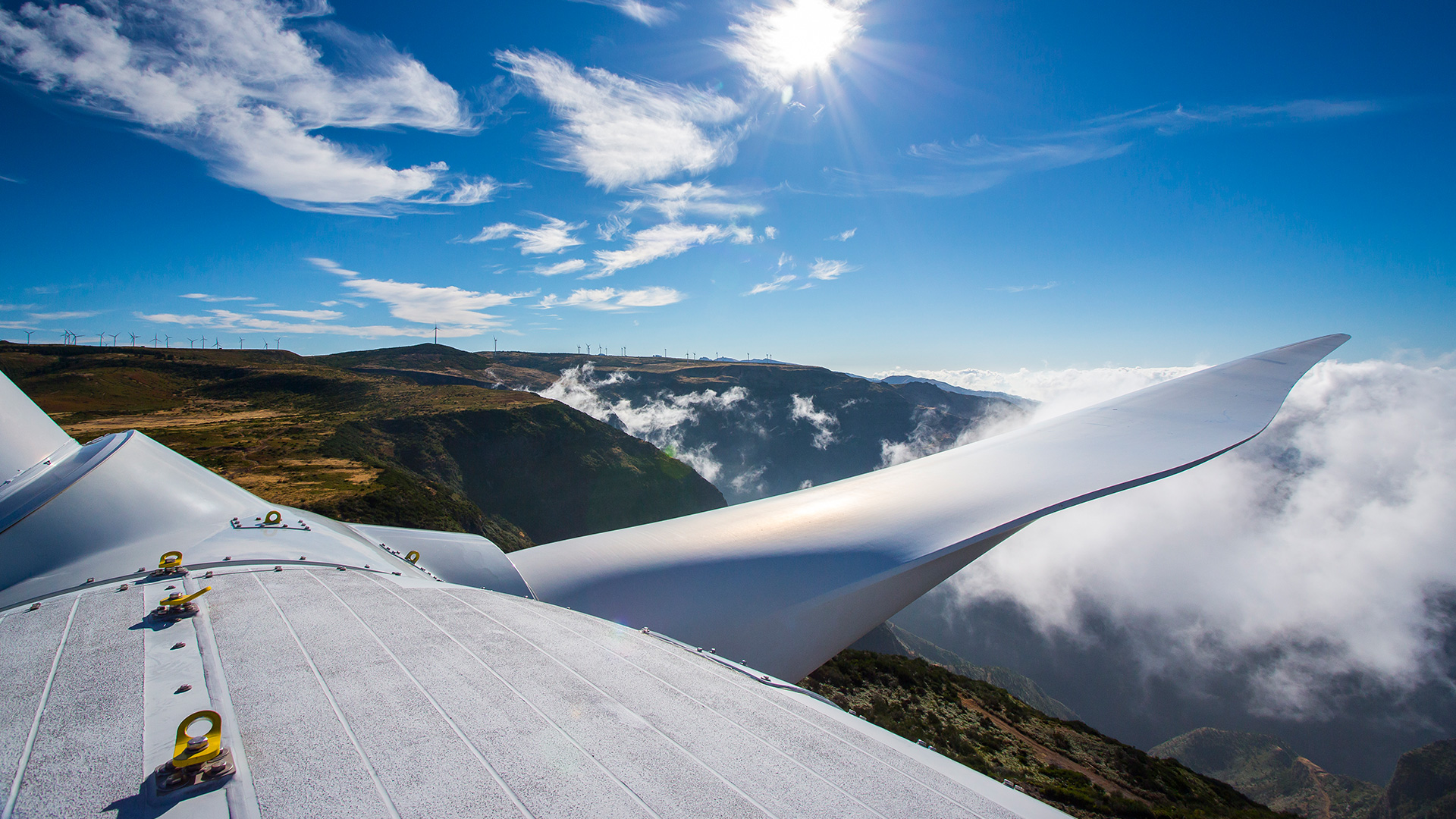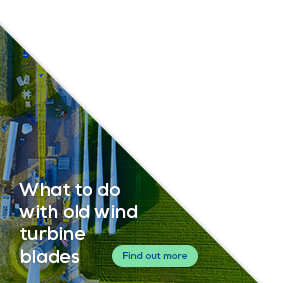CEO Foreword
Dear WindEurope Member,
The events of the last few weeks have shocked and saddened all of us in the wind energy community. As an industry that has companies, partners and colleagues in Ukraine, we stand in solidarity with the Ukrainian people in the face of Russian aggression.
Our colleagues who run the Ukrainian Wind Energy Association, Andriy and Galyna, are in Poland and being supported by the Polish Wind Energy Association. The other member of their staff, Kateryna, is serving with the volunteer force in Kyiv.
Many of you have been reassessing your exposure to Russia and Russian interests. If you want any advice or guidance on this, feel free to contact us. For now neither the EU nor any national Governments have asked us to take a common stance or approach as an industry.
But the EU are keen to know how we’re being impacted as an industry, and we’re sharing with them the implications for our supply chain and what it may mean for the ongoing development of new projects.
At the same time, as you will have seen, the EU has taken immediate and significant steps to adjust European energy policy. Energy policy is now security policy. And with that in mind, this week the EU Commission released its ‘REPowerEU’ plan to cut Russian gas imports by 2/3 by the end of this year. And to end all Russian fossil fuel imports by 2027.
That means diversifying gas imports of course. And, crucially, ramping up our domestic energy production, not least wind energy. The European Commission want more wind: 480 GW by 2030 up from 190 today, that’s 30 GW on top of what the Green Deal had envisaged. And they want faster deployment in the coming months.
This is going to be a challenge as we’re currently building only half of what Europe needs to deliver the Green Deal – see our 2021 stats and 5-year outlook here. Our message to Governments: we want to deliver this, we have the technology, the finance is available, and the supply chain can ramp up – though it’s dealing with some disruptions and higher costs. The key is to accelerate the permitting of all the good projects out there that are ready to be built.
And the Commission get this. They are moving forward to May their guidance to National Government on how to accelerate permitting – it was originally planned for the Summer. And the Commission have stressed that renewables need to be considered as being in the overriding public interest.
REPowerEU also addresses how national Governments should deal with high energy prices. The European Commission set out clear conditions national Governments must follow if they apply claw back measures to tax what they consider to be “windfall profits”. The Commission spell out clearly that these measures can’t be retroactive, they can’t apply to any electricity sold forward – for example in PPAs or bilateral contracts. They can’t mess with the wholesale electricity price signal. And crucially, they need to be limited in time and done under clear pre-defined conditions.
The Commission are also now saying that they need to consider adjusting Market Design and the price-setting mechanism. The Agency of European Energy Regulators will come out with a very important report on this next month.
This is getting the attention at the very top. Heads of States and Governments of the EU-27 met in Versailles to discuss their response to the Ukraine crisis. They endorsed REPowerEU. And gave a mandate to the European Commission to present options for emergency measures to limit what they call the ‘contagion effect of gas prices in electricity prices’, including temporary price limits. And by mid-May Heads of States and Government want the Commission to make proposals to optimise the electricity market design to deliver climate neutrality while ensuring energy security.
With all this to consider we’re now looking ahead to our Annual Event in Bilbao from 5-7 April. And in light of recent news, the event itself will have a very clear focus – energy security in Europe, and how we can deliver it. We’ll be joined by key speakers from Governments, technology, finance, industry and elsewhere, discussing among other things:
- How to simplify permitting rules and procedures;
- Ensuring the Green Deal is “made in Europe”;
- The right energy market design to drive the huge investments needed;
- Developing the grid to integrate more renewables;
- How to scale up renewable hydrogen;
- The imminent “take-off” of floating offshore wind; and
- Ensuring happy co-existence with local communities and other interests, both on land and sea.
The programme is available here – click on each session title to see the agenda and guest speakers. And you can register here – there won’t be onsite registration, so you need to register online beforehand.
This is a crucial juncture for us as an industry. Together with other renewables, we need to step up and fill the gap as we reduce fossil fuel imports. By committing to deliver the Green Deal we’re not just accelerating the energy transition. We’re helping to provide energy security, prosperity, and opportunity for Europeans.
Take care,

Giles Dickson
WindEurope Intelligence Platform

Our featured reports this month
Wind energy in Europe – 2021 statistics and the outlook for 2022-2026

Europe installed 17 GW (11 GW in the EU-27) of new wind capacity in 2021. This is not even half of what the EU should be building to be on tract to deliver its 2030 Climate and Energy goals.
81% of the new wind installations in Europe last year were onshore wind. Sweden, Germany, and Turkey built the most onshore. The UK had the most new wind installations since they account for most of the new offshore deployment. Europe now has 236 GW of wind capacity.
We expect Europe to install 116 GW of new wind farms over the period from 2022-2026. Three quarters of these new capacity additions will be onshore wind. We expect the EU-27 to build on average 18 GW of new wind farms between 2022-26. They need to build 32 GW a year in order to meet the EU’s new 40% renewable energy target.
Offshore wind in Europe – key trends and statistics 2021

Europe added 3.3 GW of offshore capacity during 2021. That’s 413 new offshore wind turbines connected to the grid, across eight wind farms.
Europe now has a total installed offshore wind capacity of 28.3 GW. That corresponds to 5,785 grid-connected wind turbines across 12 countries.
Seven new offshore wind projects reached Final Decision Investment (FID) in four different countries during 2021, with construction due to start in the coming years. Investments in new assets accounted for €16.6bn, financing 4.8 GW of additional capacity.
Staff Interviews
Welcome to our new interview feature, where we profile some of the names and faces that keep WindEurope ticking!
Every month we’ll be sitting down with some of the staff here in Brussels and covering their role in the organisation, their areas of expertise and their own take on the world of wind energy.
This month our Policy Team has got a new look! We sat down with Iván Pineda (Director for Innovation), Vasiliki Klonari (Head of Energy System Integration) and Guy Brindley (Head of Market Intelligence) for a chat about their new roles.
Iván Pineda, Director for Innovation
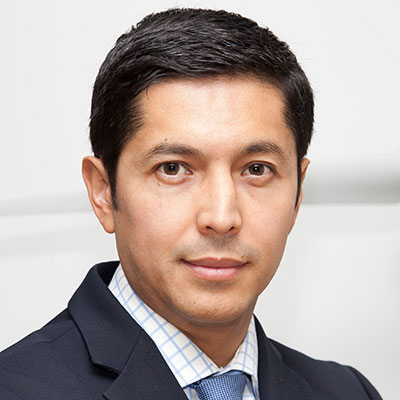
What are the main challenges for the wind industry in the field of innovation?
Wind energy today is one of the most affordable power generation technologies thanks to the constant innovation in wind turbine and wind farm design. Going forward it must demonstrate seamless integration into the power grid and improved co-existence with the environment and society. It also needs to improve the circularity of its raw materials. Crucially, sustaining cost competitiveness calls for continuous incremental innovation. We have to remind people that despite the coming to age of our industry, research and innovation do not stop – very much the opposite.
How will you tackle them in your new role?
I will be leading a newly created Innovation Team within WindEurope. It’ll be responsible for giving the industry and academia a voice across different expert networks. This will include the European Technology and Innovation Platform (or ETIPWind), together with the WindEurope Working Groups on Sustainability, and Electrification. We’ll tackle a variety of topics ranging from the definition of R&I priorities for the sector, agreeing a roadmap for 100% recyclable wind turbines, enabling policies and partnerships for increased electrification of demand – both direct and indirect via renewable hydrogen – and improving the traceability and transparency of our supply chain. The team will step up WindEurope’s efforts to provide information on different EU funding possibilities as well as coordinating a portfolio of projects with consortia from all over Europe.
Where do you see the sector in 10 years?
Europe will get at least 50% of its electricity from wind power by 2030. To get there, wind energy needs to become the first choice for countries looking to achieve sustainable development across all dimensions: environmental, social, commercial, and technological. Wind farms won’t just provide reliable, low cost, and secure electricity, but they’ll also make up highly digitalised parts of the energy system providing a wide range of services to the grid and end users. A significant portion of new road transport vehicles will want to be charged with wind power and wind will be the most sought-after supplier for energy intensive industries. Wind turbines will be adapted to their surrounding environment. And they’ll even help to improve ecosystems and biodiversity in the areas where they are installed. Lastly, the wind industry will be the leading choice for job applications among professionals due to highly qualified job offers, responsible business conduct and equal opportunities.
Vasiliki Klonari, Head of Energy System Integration
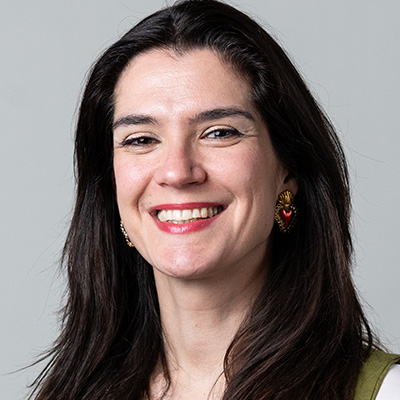
What are the main challenges for the wind industry in the field of energy system integration?
The biggest challenge is in terms of accelerating the reinforcement and build-out of the electricity grids that we will need across Europe to drive renewables-based electrification. Both onshore and offshore. From the planning perspective, this will require coordinated efforts – from the early design stages on – to bring all relevant stakeholders together. End consumers, generators, grid operators and technology providers. And to have efficient processes in place to consolidate their needs, at local, national, regional and EU level. On the policy side, we have to acknowledge the need for definitions of new asset types – energy islands, offshore renewable hybrid projects or combinations of renewables with storage. And that these should be properly addressed in regulation. Finally, we need to see the right investment incentives implemented in order to drive grid build-out – complemented with grid optimisation at the necessary pace.
How will you tackle them in your new role?
WindEurope has been working hard to reach these objectives for several years now. What changes now is that we will create a new unit, the Energy System Integration unit. It will be completely focused on the aspects which have become vital to our industry as the volume of renewables continues to grow. The unit will be supported by myself and three new roles leading our activities in system and market integration, onshore and offshore grid planning and development, digitalisation and cybersecurity. And of course it will be inseparable from our partners in the Market Intelligence unit supported by Guy Brindley and his team – who will continue providing all the necessary facts and data!
Where do you see the sector in 10 years?
Over the next ten years we expect to see impressive developments when it comes to new electricity infrastructure. Many types of pioneering or first of their kind assets will be coming online across Europe. An example would be energy islands – combining offshore generation and demand and expanded electric vehicle charging infrastructure. These will change the way we view electricity in our everyday lives and many of these will be driven directly by the expansion of wind energy. Of course this will come with increased responsibilities for our sector. But this is also what makes this new role exciting for me and my future team.
Guy Brindley, Head of Market Intelligence
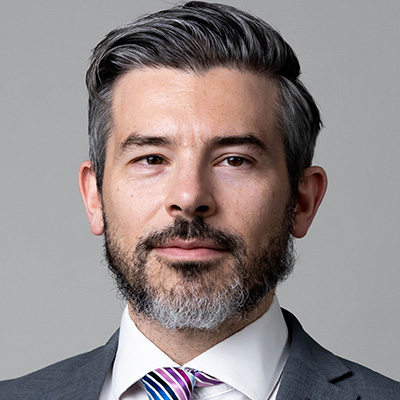
What are the main challenges for the wind industry in terms of market developments?
There are many challenges for wind energy, from social acceptance to supply chain pressures, grid development and global competition. We don’t need reminding of COVID, the crisis in Ukraine or even the infamous Evergiven. But I prefer to talk about opportunities; wind energy is not just one of the solutions to climate change, but it also increases energy independency and provides low-cost and clean energy to society. Furthermore, development, construction and operation of wind farms provides a boost to economies and provides jobs.
How will you tackle them in your new role?
My new role is bittersweet. On the one hand I lose my mentor and good friend Daniel Fraile who has supported me and helped me to adapt from when I joined as an actuary with 9 years of experience in finance in London, but with no experience of energy or the policy environment in Brussels, and on the other hand I have been given the opportunity to develop and lead an exciting new team. We are already working hard on new data and tools to better support our messaging and our members, and we will continue to produce the reports and statistics that we are known for.
Where do you see the sector in 10 years?
I am going to refer you to Vasiliki for this one, she’s putting together our position on the future design of the energy market! There is no doubt that data will continue to become more important, net least in the digitalisation of the grid but also in the way that our association, and companies in general function. I will be working with my team to provide all the backup we need to make our arguments as soundproof as possible so that we can counter misinformation and ensure that we are a major solution to climate change and energy security in Europe in the years to come.
Members’ Successes
VSB Group is taking big steps towards a green Europe by expanding operations in Finland, France and Poland

Renewable energies are key to European energy security and climate neutrality. VSB Group has recently reached three milestones in some of its main focus markets:
Poland: In the Polish energy regulator’s auction for renewable energies in December 2021, VSB Energie Odnawialne Polska secured the largest volume awarded in this bidding round, totalling 164.8 MW. The awarded projects are located in the voivodeships of Wielkopolska and Silesia. The sites are scheduled to be up and running by 2025.
Finland: VSB Uusiutuva Energia Suomi Oy has been granted permission to build its 170 MW Karahka wind farm near the town of Oulainen (Northern Ostrobothnia region). The project is scheduled to go online by the end of 2024. Cooperation on this with decision-makers, leading public officials and other stakeholders has gone very smoothly.
France: VSB Énergies Nouvelles has acquired nine wind energy assets, totalling 143.5 MW. VSB will manage and monitor various steps of project development up to the ready-to-build stage.
Now is the time for focusing on large-scale projects and the acceleration of existing ones. To reach the targets set out under the European Green Deal, Governments need to drop barriers to wind energy – such as the 10H rule in Poland – to give wind energy the space it needs and to expedite permitting procedures. And all this also depends on the helping hand of experts being hired all over Europe. The wind energy sector’s chief concern now is on building a peaceful, climate-neutral Europe and VSB Group is proud to be part of that process.
Find out more
Share your successes with us!

Is your brand bringing new, ground-breaking solutions to the wind industry? Have you recently launched a major project in your field? Do you have positive business news to share?
Then make sure to get in touch with us here at WindEurope – we’ll be happy to promote your success story as part of our monthly Bulletin! This is a chance to share your accomplishments with thousands of others from right across the wind energy value chain – a major visibility boost.
Please be aware that this service is only available to members from the categories C3 and above. Publication of stories is on a first come, first served basis.
Get in touch with our Membership team now to send in your news!
Send us your success story
Events
WindEurope Annual Event 2022

When: 5-7 April
Where: Bilbao
We have less than a month to go now until our keynote gathering of the year, WindEurope’s Annual Event. And with recent events fresh in our minds, we have a lot of ground to cover.
The current war in Ukraine highlights the need for more renewables ASAP to improve Europe’s energy security. That means a major role for wind power going forward. But energy security and the Green Deal are at risk if we don’t start building a lot more wind – and soon. All the while the wind industry continues to struggle with low volumes, high commodity prices and dysfunctional supply chains.
Bilbao will be a chance to get to grips with these issues. Key speakers from government, technology, finance, industry and elsewhere will be joining us to establish our priorities – and to lay out the way forward.
But the conference is only one side of the event. We’ll also be playing host to specific Feature Areas that will look at the industry from different angles. A Global Markets Theatre looking at wind development across the world. Our StartUp Pavilion showcasing new players, technologies and ideas. Our WindTalks addressing innovation and industry challenges. And our LearnWind Area focusing on everything related to education, skills and our workforce. Be sure to download our Event App to help find your way around.
And of course we’ll have our main exhibition space – 350+ companies and organisations, keen to do business and deliver energy security for Europe, backed by renewables. The cream of the industry under one roof – and the ideal venue to build lasting business partnerships.
Registration is still open – check out our registration page for a full price breakdown. Do join us if you can.
Register now
Offshore Wind in Europe 2021: Trends and statistics

When: 15 March, 15:00-16:00 CET
Wind energy needs to take off in the years to come – Europe’s energy security depends on it. And the growth of offshore will accelerate that growth.
On the back of our recent report, WindEurope analysts will discuss the latest developments in the European offshore wind sector – the key offshore wind farm installations, supply chain activity, investment trends, and the latest policy developments. This will be followed by a Q&A session for participants.
Register now
WindEurope Technology Workshop 2022 – Call for abstracts open now!

We are inviting you to join us this June in Brussels for our annual Technology Workshop on Resource Assessment and Analysis of Operating Wind Farms. Check out our event website for more details on this.
We have opened a call for abstracts in advance of the workshop. And we’re very keen to hear what you have to say. One breakthrough idea might be all it takes to help accelerate the growth of European wind. We are specifically looking for proposals which are innovative, non-commercial, and which contribute to the wind industry’s knowledge. We also ask that you keep the abstracts to a maximum of 500 words.
Our call for abstracts is open until 18 March.
Click here to see the complete list of topics – they’ve been streamlined into three overall tracks:
- Resource Assessment;
- Analysis of Operating Wind Farms; and
- Artificial Intelligence, Business Models and Forecasting
Submit your abstract
WindEnergy Hamburg 2022

When: 27-30 September
Where: Hamburg
WindEurope will be the European Partner at WindEnergy Hamburg 2022 taking place on 27-30 September. Registration for exhibitors is already open. Check out the application page for a full breakdown of prices and deals.
Find out more
RE-Source 2022

When: 6-7 October
Our RE-Source Event for this year has been confirmed for the 6-7 October. This is a key gathering for corporate buyers and sellers from across Europe, and where all of the actors in the PPA world can come together and discuss the latest developments.
The location and further details will be confirmed in the coming months. Stay tuned!
Save the date
Other News
Windflix – Giles and Pierre discuss Europe’s energy response to current crisis

In light of the events of the last few weeks, and the rapid response to the situation across Europe, Giles and Pierre take a look at the implications of the war in Ukraine on energy policy, at the EU level and across the Member States. What effect will this have on the Green Deal and the Commission’s existing plans for the expansion of renewables? And how will we tackle the rise in energy prices?
Watch the episode


